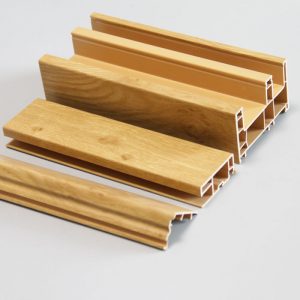
1. The Science of Heat Locking
Laminated UPVC doesn’t just slow heat transfer – it strategically blocks all escape routes:
– Multi-Chamber Design: 3-5 air cavities create staggered thermal breaks, increasing R-values to 0.8 m²K/W – matching brick wall performance in a slim profile.
– Nano-Reflective Films: Metal oxide coatings reflect 95% of infrared radiation while allowing visible light through (a trick borrowed from NASA spacesuit visors).
– Gas-Filled Barriers: Some premium versions use argon/krypton between laminates, reducing convection losses by 40% versus air-filled units.
2. Real-World Energy Savings That Shock Experts
– Winter Performance: In -20°C Moscow winters, laminated UPVC maintains 19°C inner surface temps when aluminum frames drop to 5°C (eliminating condensation).
– Summer Advantage: Phoenix tests show 30% lower AC loads compared to thermally-broken aluminum, paying for itself in <5 years via energy savings.
– Passive House Certified: The only plastic profile system meeting PHI Class A standards without thermal bridges.
3. Beyond Basic Insulation
What sets these profiles apart:
– Thermal Memory: Shape-stable up to 80°C (won’t warp like cheaper PVC in desert climates).
– Condensation Control: The warm inner surface prevents mold-friendly dew points (critical for hospitals/museums).
– Installation Perfection: Laser-welded corners eliminate the 0.5mm gaps that plague assembled frames, closing last thermal loopholes.
4. Future-Forward Thermal Tech
Coming innovations will:
– Phase-Change Layers: Wax-filled microcapsules absorb/release heat at specific temperatures (like thermal batteries).
– Electrochromic Insulation: Switch between insulating and ventilating modes with applied voltage.
Pro Tip: For maximum efficiency, pair with aerogel-filled spacer bars – the complete system achieves U-values as low as 0.6.
This isn’t just another window – it’s an active thermal management system** disguised as a building component. In the race to net-zero buildings, laminated UPVC is lapping the competition.
(Ideal for: Passive houses, historic retrofits, and any project where energy bills keep owners awake at night.)






